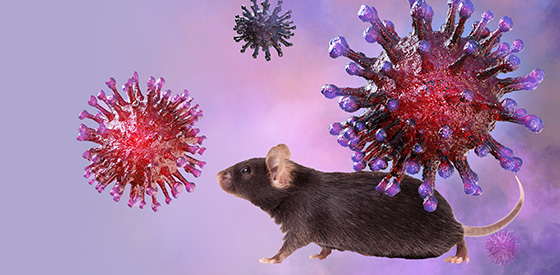August 2nd 2022
Jeremy D. Bailoo
It is now over two years since the COVID-19 pandemic was declared and, to date, 6.4 million people have died as a consequence of contracting the disease. In the space of one year, vaccines were developed and their safety and efficacy evaluated and demonstrated. This shorter time frame for vaccine development was a result of over a decade of animal research into other coronaviruses, MERS and SARS, as well as decades of animal research into mRNA. 4.87 billion individuals are now fully vaccinated against COVID-19. Many restrictions related to the reduction of transmission of the virus—such as mask mandates and social distancing—have been removed as more individuals became vaccinated. Why? Because even though it is still possible to catch COVID-19, especially the new BA. 4 and BA. 5 variants, vaccinated individuals on average are spared the severe and often lethal effects of the disease.
It is important to note that there is still a great deal of disagreement among scientists with respect to the current guidance from the Centers of Disease Control. Some, for example, think that based on scientific data and knowledge of virology and immunology, the 5 day minimum quarantine period is insufficient to guard against transmission from the new COVID-19 variants. Others feel that given the lack of enforcement and adherence to strict policies early on with respect to safeguards of transmission against COVID-19, the disease is now a part of our “new normal”. And yet others think that the virus will be labeled as endemic by 2024. Importantly, endemic does NOT mean that the virus will persist in the population in a less harmful way. To an epidemiologist, endemic simply means that the rate of infection in a population is at some fixed level. In the case of COVID-19, this means that COVID-19 can still be widespread and deadly. It is unsurprising, therefore, that scientists are still hard at work developing new therapeutics, such as novel strategies for the administration of vaccines.

Last week, two such strategies made the news cycle. The first, a needle-free vaccine patch—called a high-density microarray patch (HD-MAP)—was found to be highly effective at neutralizing COVID-19 variants in mice. According to the lead author, Dr. McMillan:
“The high-density microarray patch is a vaccine delivery platform that precisely delivers the vaccine into the layers of the skin which are rich in immune cells. We found that vaccination via a patch was approximately 11 times more effective at combating the Omicron variant when compared with the same vaccine administered via a needle. So far, every vaccine type we have tested through the patch, including subunit, DNA, inactivated virus, and conjugate produces superior immune responses compared to traditional needle vaccination methods.“ [emphases added]
The second strategy—again in mice—involved a needle-free mucosal COVID-19 vaccine. According to the press release, current vaccines are injected intramuscularly in 2 or more doses and are effective in preventing COVID-19, but they do not induce efficient mucosal immunity or prevent viral transmission. Here, intranasal administration (that is, via the nose) of 2 doses of the phage T4-COVID-19 vaccine 21-days apart induced robust mucosal immunity, in addition to strong systemic humoral (in body fluids such as blood) and cellular immune responses. The intranasal vaccine induced broad virus neutralization.
All these responses were much stronger in intranasally vaccinated mice than that induced by the injected vaccine.
Key to both studies was that both novel methods of vaccination, be it the patch or via the nose, elicited a more robust immune response than the current method of intramuscular injection, particularly against the new variants of COVID-19. In light of the current prediction by leading virologists and epidemiologists that COVID-19 is indeed a part of our immediate and distant future, strategies such as these can serve to further reduce the severity of infection, and thus save lives. And all of this is made possible by animal research. #MPAR
